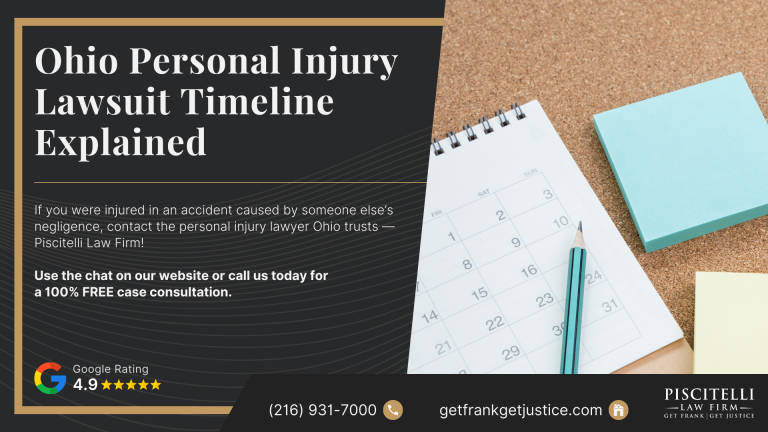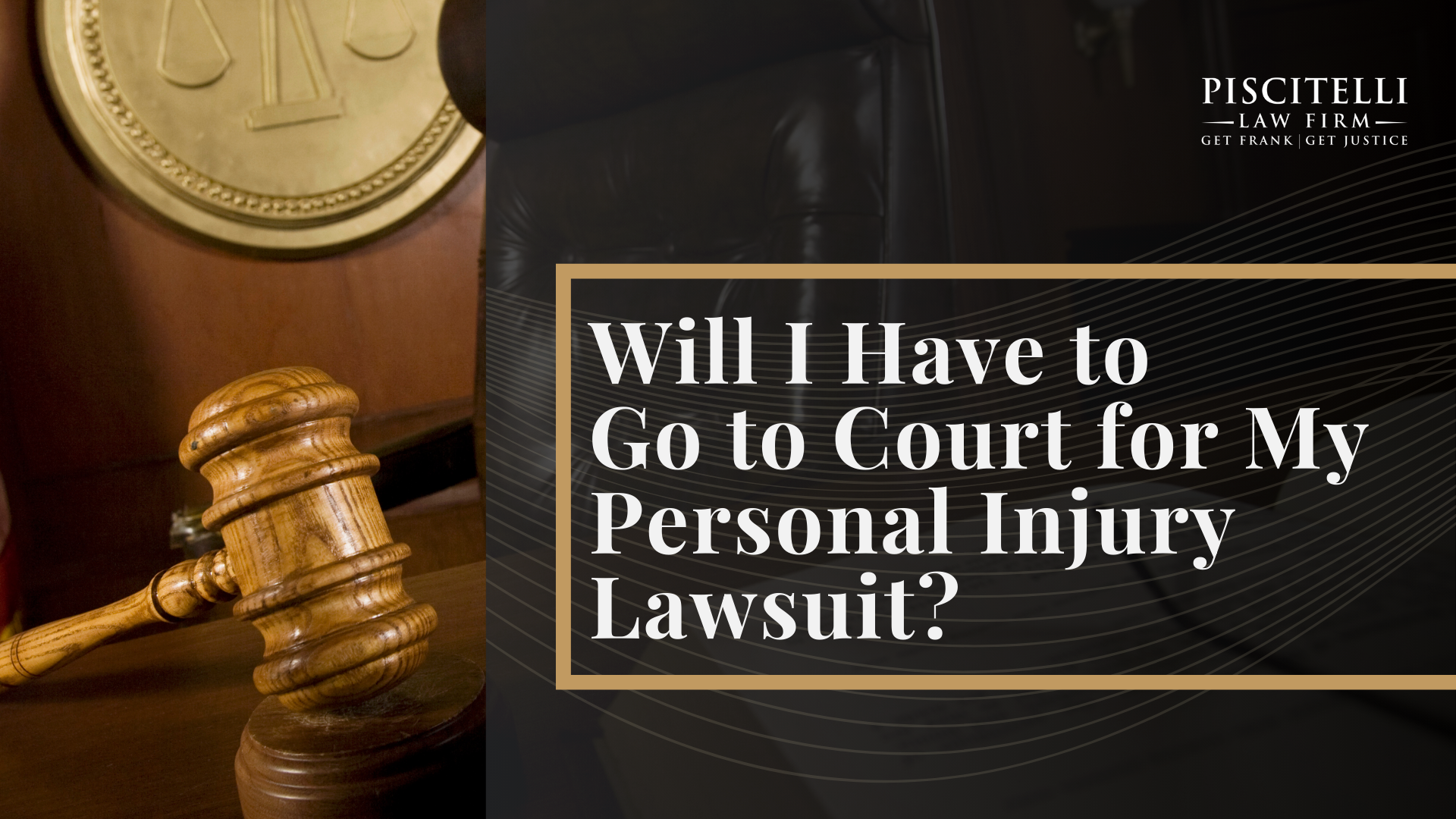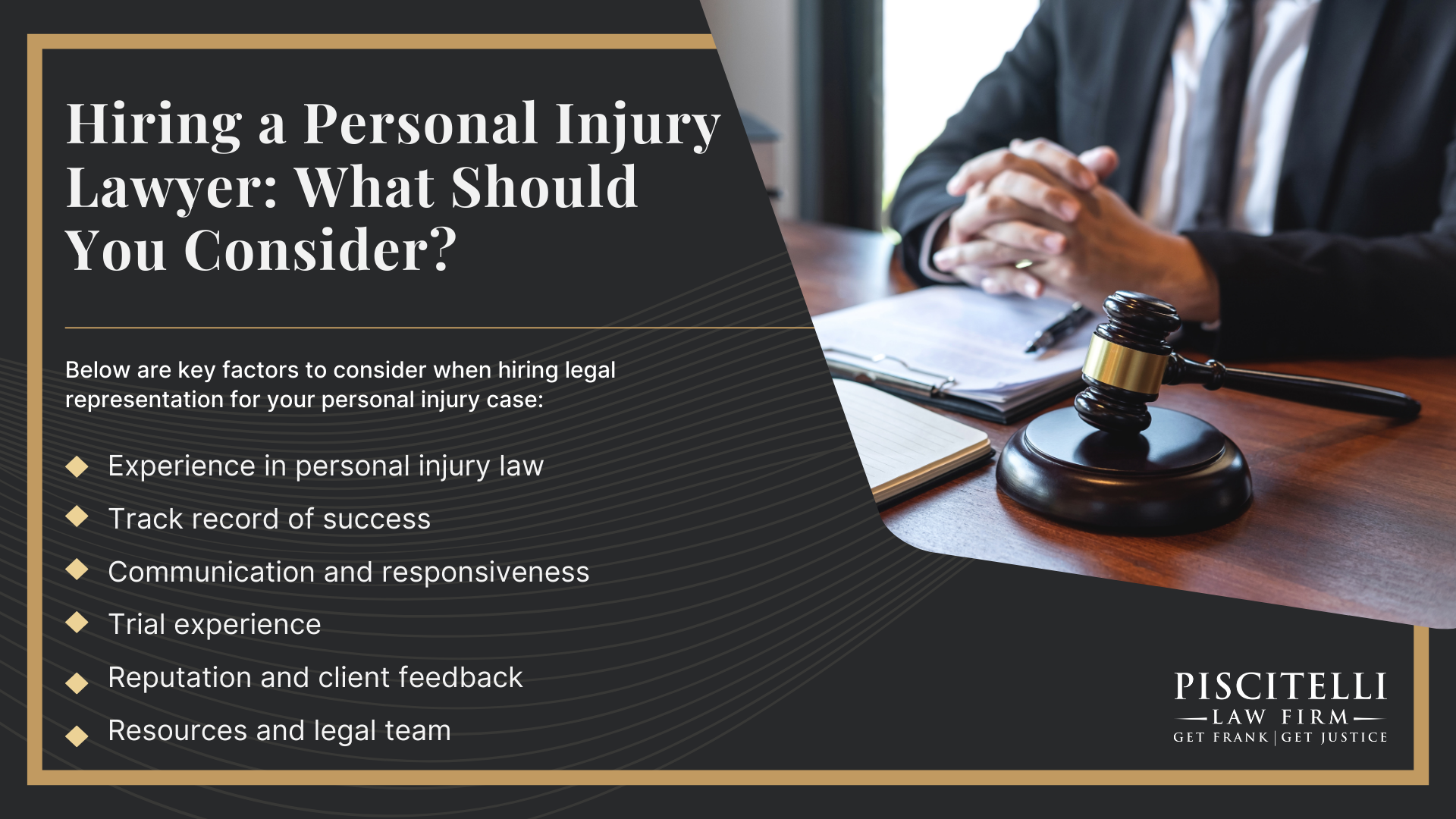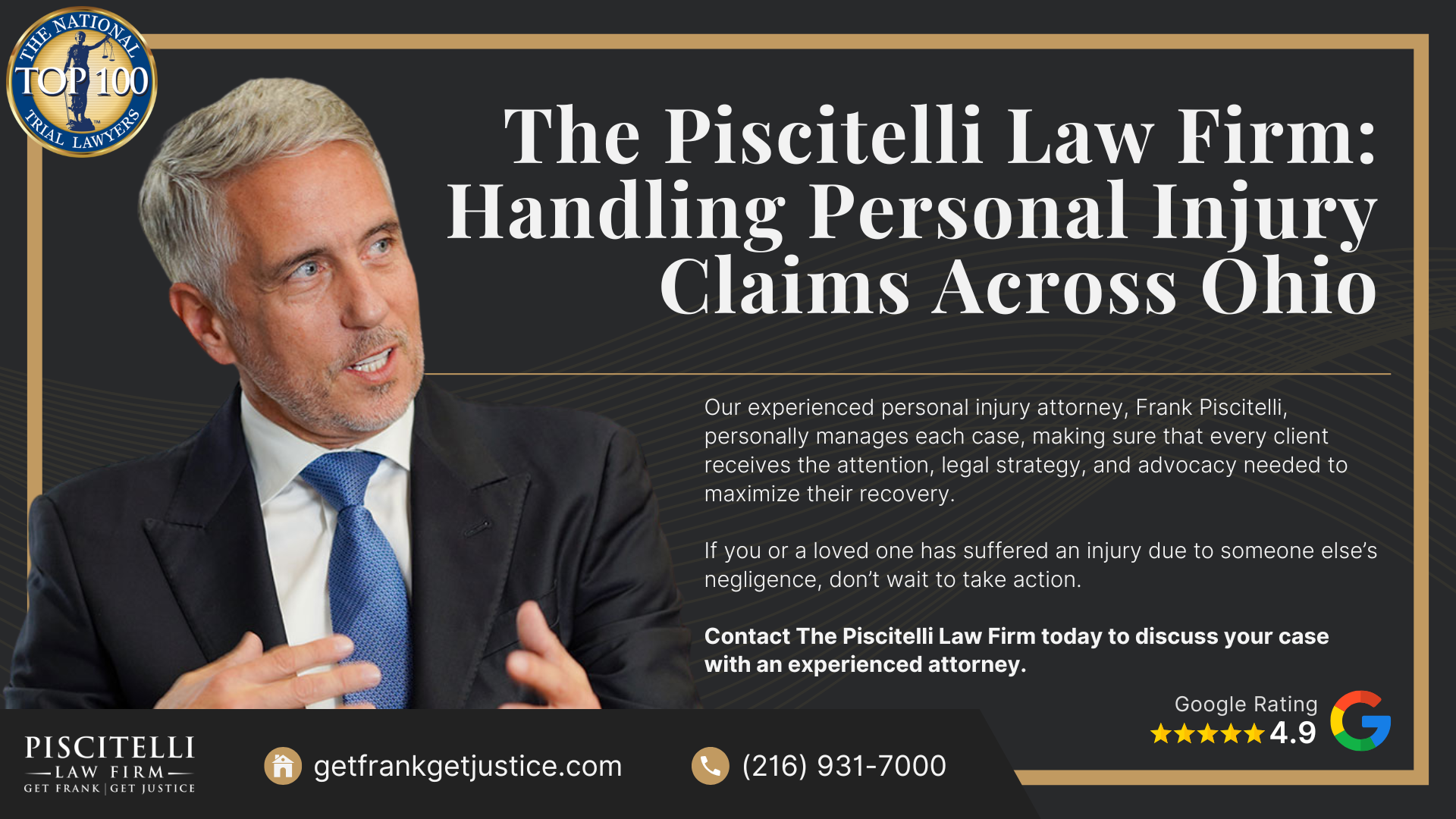In Ohio, personal injury law provides a framework for injured individuals to seek compensation from the party responsible for their harm.
To recover damages, the injured person must prove negligence by demonstrating the defendant owed them a duty of care, breached that duty, and directly caused their injuries.
Ohio follows comparative negligence, meaning compensation can be reduced if the victim is partially at fault.
The timeline for a personal injury case typically spans several months to multiple years, depending on complexity, severity of injuries, and cooperation between the parties involved.
Medical treatment should continue until the injured person reaches maximum medical improvement, making sure that all injuries and related medical bills are accurately documented before pursuing a final settlement.
Negotiations typically start with a carefully prepared demand letter, outlining the victim’s injuries, expenses, and expected compensation.
While the average personal injury case in Ohio resolves through a settlement agreement, some claims proceed to trial if parties cannot agree on liability or damages.
Understanding the detailed personal injury case timeline below helps victims set realistic expectations about the steps involved in their claim.
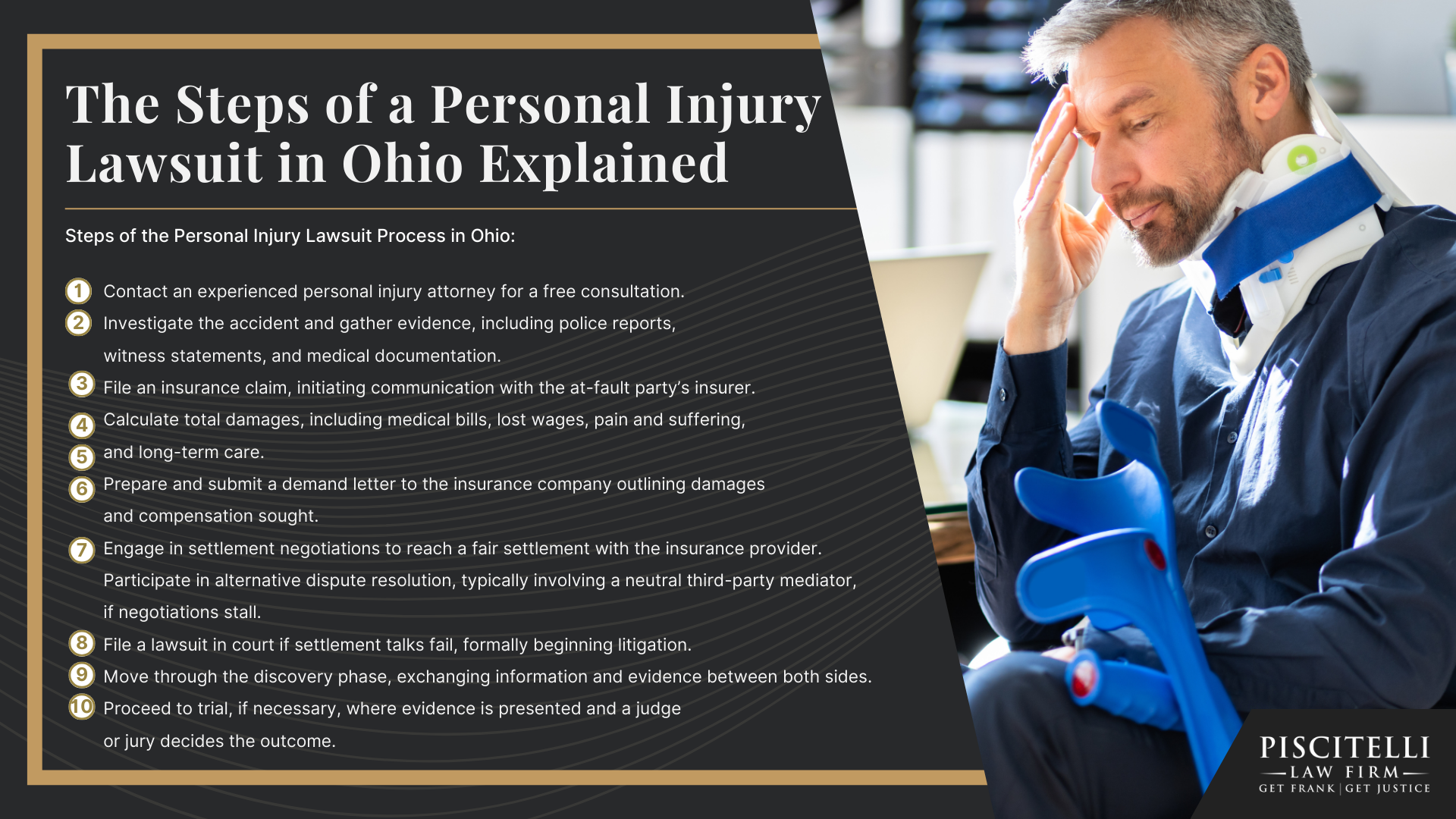
Steps of the Personal Injury Lawsuit Process in Ohio:
- Contact an experienced personal injury attorney for a free consultation.
- Investigate the accident and gather evidence, including police reports, witness statements, and medical documentation.
- File an insurance claim, initiating communication with the at-fault party’s insurer.
- Calculate total damages, including medical bills, lost wages, pain and suffering, and long-term care.
- Prepare and submit a demand letter to the insurance company outlining damages and compensation sought.
- Engage in settlement negotiations to reach a fair settlement with the insurance provider.
- Participate in alternative dispute resolution, typically involving a neutral third-party mediator, if negotiations stall.
- File a lawsuit in court if settlement talks fail, formally beginning litigation.
- Move through the discovery phase, exchanging information and evidence between both sides.
- Proceed to trial, if necessary, where evidence is presented and a judge or jury decides the outcome.
Gathering Evidence for a Personal Injury Lawsuit
Strong evidence is the foundation of any personal injury lawsuit, directly influencing the likelihood of securing a fair settlement or favorable court verdict.
Medical records document the extent of injuries and necessary treatments, providing crucial proof of damages.
An experienced legal team collects and organizes evidence, making sure that it is presented effectively throughout the litigation process.
Key materials such as witness testimony, accident reports, and expert evaluations help establish fault and support the injured party’s claim for compensation.
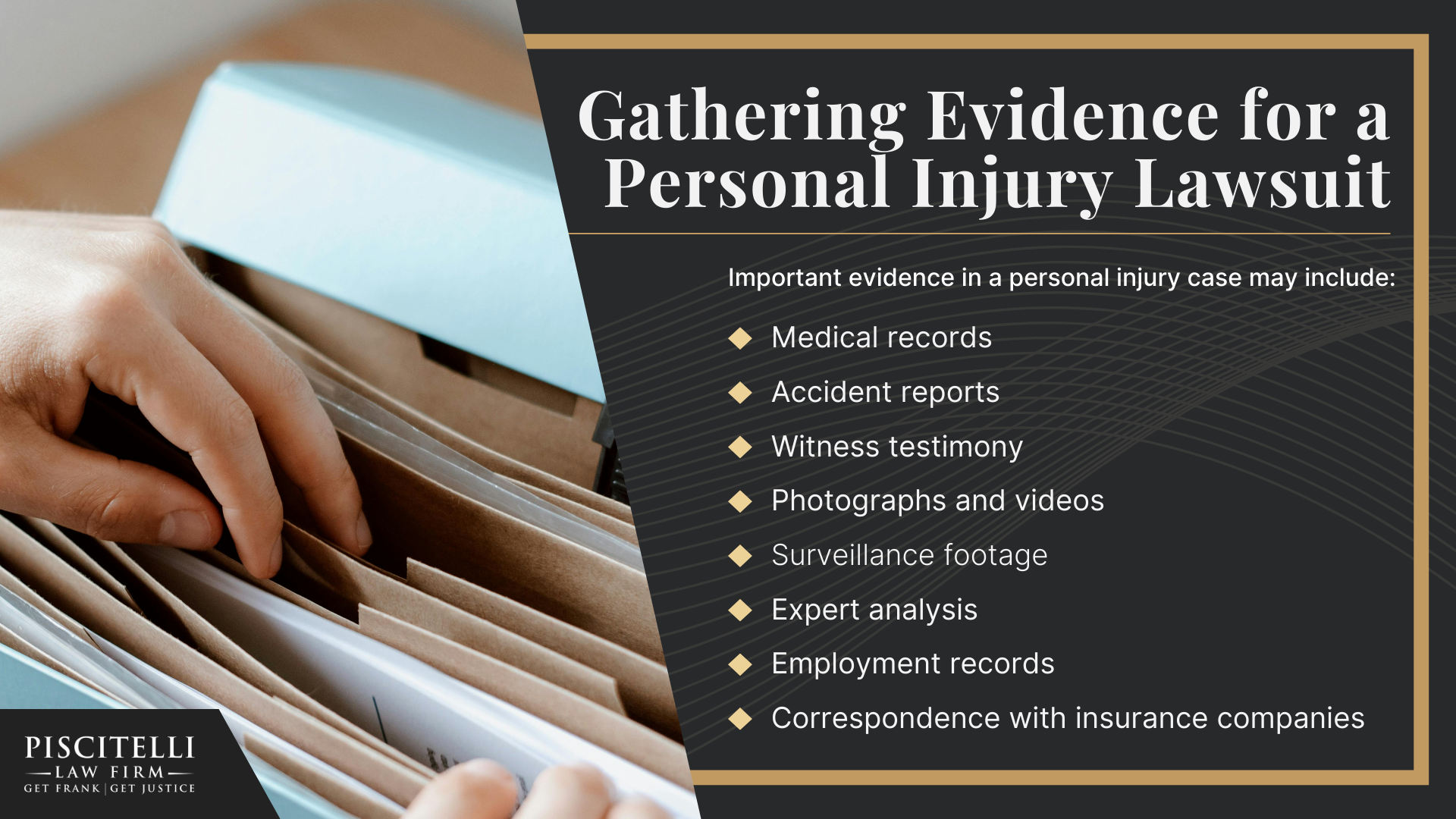
Important evidence in a personal injury case may include:
- Medical records – Proof of injuries, treatments, and long-term prognosis.
- Accident reports – Official documentation from police, employers, or property owners.
- Witness testimony – Statements from individuals who saw the accident occur.
- Photographs and videos – Visual evidence of injuries, property damage, and accident scenes.
- Surveillance footage – Video evidence from traffic cameras, security systems, or dashcams.
- Expert analysis – Testimony from medical professionals, accident reconstructionists, or financial experts.
- Employment records – Verification of lost wages and reduced earning capacity.
- Correspondence with insurance companies – Emails, letters, and settlement offers related to the claim.
Damages in Personal Injury Claims
Damages in a personal injury lawsuit refer to the financial and non-financial losses suffered by the injured party due to another’s negligence.
In cases involving multiple parties, liability may be divided among defendants, but each still has a legal obligation to compensate the victim for their role in causing harm.
Compensation covers a wide range of losses, including payments to medical providers for treatment, lost wages, and the physical and emotional toll of the injury.
Whether the claim stems from a car accident, workplace injury, or medical malpractice, victims deserve to receive fair compensation for their financial burdens and long-term suffering.
Damages in a personal injury claim may include:
- Medical expenses – Costs for hospital visits, surgeries, physical therapy, and ongoing treatment.
- Lost wages – Compensation for time missed from work due to injury.
- Loss of future earnings – When injuries prevent returning to work or reduce earning potential.
- Pain and suffering – Compensation for physical pain and emotional distress.
- Property damage – Repair or replacement costs for vehicles and personal belongings.
- Loss of enjoyment of life – When an injury affects daily activities, hobbies, or independence.
- Loss of consortium – Compensation for the impact on personal relationships, including spouses and family.
- Punitive damages – Awarded in cases of extreme negligence or intentional harm to punish the defendant.


